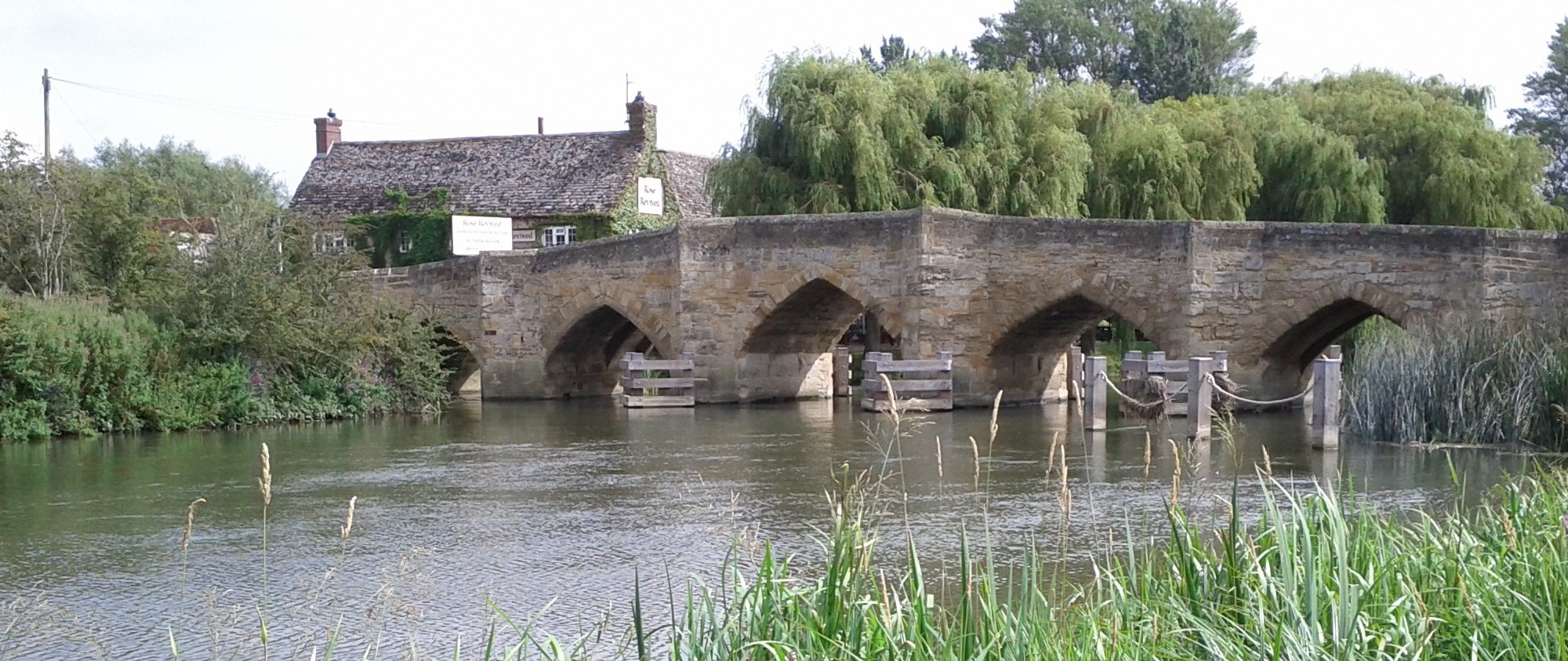Tales from the Big Trails, in print on 2nd September 2021, available now for pre-order from Vertebrate Publishing. Featuring all 15 National Trails in England and Wales, and the 4 designated long-distance Scotland’s Great Trails. This is the story of the people I meet, the landscapes and coastal scenery and the sheer joy of walking these iconic long-distance routes in the UK. Click on a link below for a copy.
Tales from the Big Trails – Vertebrate Publishing
Tales from the Big Trails – Amazon
Overview
From the Thames Barrier, the path takes you through Greater London past many historic landmarks and bridges. Initially, the landscape is industrial and then riverside residential, before passing through the City towards Putney, where the towpath starts. leading you into rural riverbank scenery. It then meanders through Surrey, Berkshire and Oxfordshire before reaching its watershed in Gloucestershire, passing through many historic villages, towns and cities.
Time of year
Flooding can seriously curtail your adventures. The section north of Cricklade was impassable in December 2011 and in recent years, the river has experienced severe flooding on almost all sections, specifically upstream of Putney. Please see the flood risk warnings and also check the national trail website for up to date information. In winter lock and bridge maintenance work can mean important crossings are closed. Like many trails, the summer holiday period will mean the best accommodation is booked. The river will also be busy with holiday boats on the river, which are noisy and follow your pace.
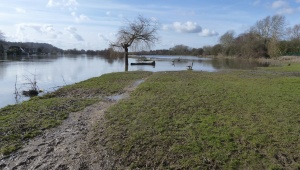
Having said all that, I walked the path in winter!
Length of walk
A surprisingly long walk at 184 miles. I walked over 7 non-consecutive days in November/December 2011, equivalent to 7 marathons. Given that the path is level, I decided to up my usual mileage, to see what could be achieved. I had approximately 8 hours of daylight, so the pace was high at 3½ mph. I started before dawn and carried a torch too. I chose to walk away from the hustle and bustle of city life towards the Cotswold Hills.
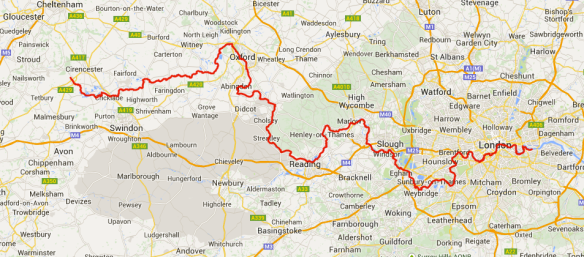
Accommodation
There are numerous public transport options that will give you access to a wide range of accommodation, although not necessarily on the path. If you live in the area, you can stay at home and use a car and a combination of public transport to walk back to your car each day. Rail links follow the Thames closely. Campsites can be found at intervals. There are numerous Inns, Pubs, B&B and Hotels of character to suit all budgets.
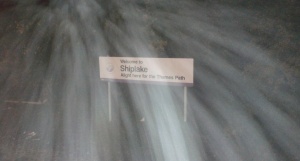
Experiences
My objective was to complete the path in 7 long days, with time between to recover, rather than a continuous multi-day adventure. I could travel light and after some logistical analysis, I realised I could use public transport and a car each day. A similar tactic could work for others, who could stay in the same accommodation for 2-3 days, travelling out each day and walking back.
The first day was going to be a challenge, I caught the 05:45 commuter train into London, full of dark-suited city workers reading the FT, followed by the tube to Woolwich and bus to the start at the Thames Barrier, arriving just before dawn. Without delay, I set out through the industrial landscape, past the O2 Arena (Millenium Dome) through the Docklands. The weather was bright and chilly, ideal conditions.
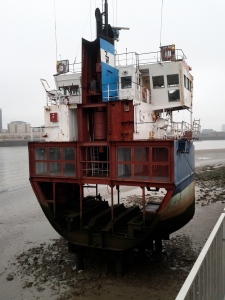
You can select alternative North or South Bank routes through the day, and I chose the more interesting options. No avoiding the residential developments, which are at times difficult to navigate through, but progress was good to Tower Bridge. The next hour or so leads you through Central London and many photogenic historic sites. Avoiding the tourists when you are on a mission is a challenge, dawdling about with heads buried in their smartphones and guides.
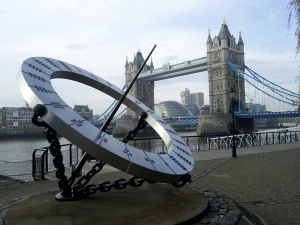
Progress was good through Chelsea and the trendy areas of West London to Putney, where the towpath starts and immediately leads you into the more rural scenery. The sense of achievement of having walked through London was intense, as was the growing weariness of maintaining a fast pace. With some determination, I walk through Chiswick and into Richmond after 8½ hours and 29m to collapse into a tube train. Getting off that tube was a struggle and it was now impossible to keep up with commuters rushing home to their evening meals. Little did they know that I had maintained almost 3.5mph since dawn and walked almost 30 miles.
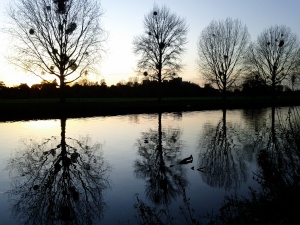
So 30 mile days are possible! So the next section I felt confident on a 28-mile day from Richmond to Windsor. I had no choice as my car awaited my arrival. At Teddington, you leave the tidal Thames behind passing wonderful parkland until you reach Hampton Court. Then through reservoir land towards Staines and into an area that was severely flooded in the winter of 2013/14. There is a critical ferry crossing at Weybridge that should be noted. A cacophony of Parakeets provided a soundtrack through Staines and into Windsor, a din that won’t let up until you are past Henley. Urban myth says a batch escaped from Teddington Studios in 1951 after during the filming of “The African Queen” and they then bred like crazy.
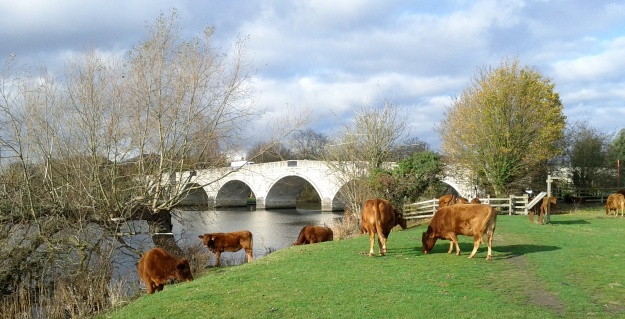
The third day was slightly less challenging, other than the section past Marlow, where cross-country skiing techniques can be used down the muddy path. At this time of year, the path was quiet (except for the Parakeets) only the usual dog walkers. Much of the Dorney path was closed as preparations were made for the Olympic Rowing 2012. Marlow and Maidenhead have fine bridges, particularly Brunel’s wonderful brick railway arch.
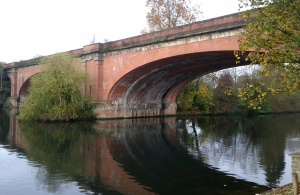
Now the path gets very quiet and you are unlikely to meet a soul during the day outside of the towns of Goring and Streatley. Even the city of Reading was quiet, from the perspective of The Thames. The river has clearly diminished in size since London, and the bridges, inns and pubs get quainter. Another 29-mile day but a welcome bus to Henley, walking through the Christmas Fayre to the station, for the train to Shiplake.
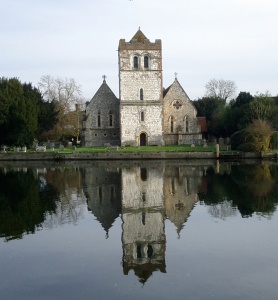
Day 5 takes you through Wallingford, Abingdon and Oxford, all historic crossing points of The Thames. I passed many ancient meadows, with views that have perhaps remained unchanged for centuries. A smartly dressed German family had just left Oxford on bicycles, intent on reaching the source! It was not long before I saw them return.
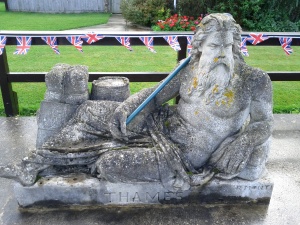
Overnight logistics for the final two days was more of a challenge, so I loaded up my summer backpacking kit intent (no pun intended) of camping at Lechlade. My pace deteriorated, but a fine meal revived my spirits before a cold night in a muddy campsite, the warden thought I was mad. The final days walk into Cricklade was uneventful, but after that, I was slowly drawn into ever-deepening flooded fields, which proved to be impassable. I had quite a fright when my boots sunk deep into the mud. Walking poles saved me and I retreated back to a Leisure Centre to clean up and catch a taxi around the floods to Ewen. From there the path continued to follow the stream towards the source of The Thames. Old Father Thames, a sculpture that used to mark the source now rests at the lock at Lechlade and now only a rock, littered with copper coins marks the spring. During the 2013/14 floods, this spring began to flow again for the first time in many years.
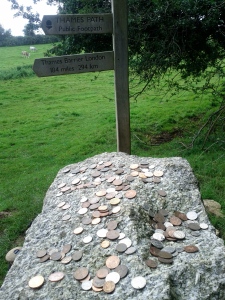
I would perhaps advise a more leisurely pace, unless, like me, you set yourself a challenge to explore the limits of your walking endurance. 7 days and 7 marathons had a ring to it.
Itinerary
- Day 1 – 29m – Train/tube/bus to start, walk to Richmond – tube/train home
- Day 2 – 28m – Car to Windsor, train to Richmond, walk back to Windsor
- Day 3 – 25m – Car to Shiplake, train to Windsor, walk back to Shiplake
- Day 4 – 29m – Car to Shiplake, walk to Shillingford, bus/train back to Shiplake
- Day 5 – 26m – Car to Shillingford, walk to Swinford Bridge, 2 buses back to Shillingford via Oxford
- Day 6 – 24m – Train to Oxford/bus to Swinford, walk to Lechlade – camp
- Day 7 – 23m – Walk to Source (severe flooding north of Cricklade), taxi diversion, train home from Kemble.
